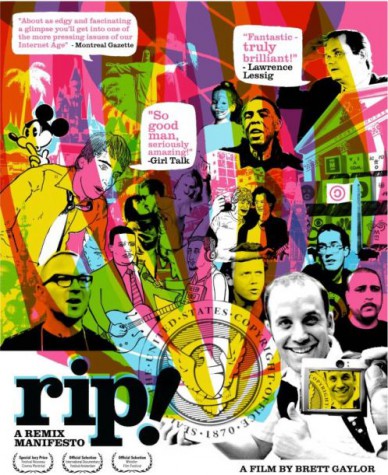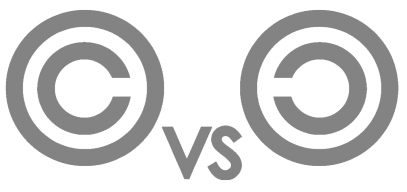FLOWCHART
DATA
ADRUINO
ESSAY
FINAL
HOME
RIP
REMIX
RIP: Remix Manifesto is a documentary tackling the issue of copyright and the state of the information age. It was released in 2009.
An inside look of the world of Mash-Ups and copyright law.
What is a Mash-up? it is a creation by an artist in any sort of style that uses other peoples work to make up a new creation which is aften chased by law suits.
This film shows you how the copyright laws work and how many people work around them. It mainly looks at the career of a Mash-up artist called 'Girl Talk' who uses different parts of existing songs and remixes them to create his own tracks and then also gets many different opinions if this is legal or illegal as some say that the original tracks are hardly recognized after being mashed up.
The film starts with a scene the creator saying that this film is free to watch and is under the 'Creative Commons Licence' which refers to that it can be edited ad republished and they also encourage you to do so. They also give you the option to pay what you like for the film, to help out the creators and also create more films under the same licence.
Introduces 'Girl Talk' and follows him on his career, shows the ups and downs to what he does. He gets many different opinions for the audience to make their own choice whether is it right or wrong.
Also looks at 'Napster' and the problems it faced. As people could stream music from it, artists started disliking Napster as they were not getting the right amount of money from it and many also took it to court, but then many artists liked the idea as it made more people listen to their music even though they weren't getting as much money from it, their popularity grew.
Warner/Chappell are the biggest music publishing company in the world, even owning the 'Happy Birthday' song. That song alone brings then in millions every year. The company have made many court cases with people using their songs without their permission.
Walt Disney also takes many people to court due to copyright, but many people do not know that most of their most popular characters are copies from previous fairy tales and stories. They also got the copyright law changed just for themselves, which means copyright will last forever for their work which was not part of the law before. Their was an artist who used to draw a character similar to Mickey Mouse and Disney saw this and sued him for doing such but many complained saying that the character was not the same and he was not breaking any copyright
laws, Disney then slightly changed their own character to look more like his so they would win the court case and he would no longer be allowed to draw his character.
At the end of the film it shows how the copyright law is always changing and getting worse, with less freedom to the audience and more money to the companies. Many people are starting to stand up to this as it is making it hard for anyone apart from large corporate companies creating their own work.


Module: MGRA501.1
Authorship & Interaction | BA (Hons) Graphic Communication Design | University of Westminster
© 2013 Stanislav Cernov

Copyleft is a type of license that attempts to ensure that the public retains the freedom to use, modify, extend and redistribute a creative work and all derivative works
(i.e., works based on or derived from it) rather than to restrict such freedoms.This is accomplished by the copyright holder granting irrevocable permission to the public to copy and redistribute the work in the same or modified form, but with the conditions that all such redistribution
1) make the work available in a form that facilitates further modification and
2) use the same license.
A copyright is a designation by a government that grants the author of a creative work (e.g., a musical composition, painting, poem, product design, movie or computer software) the exclusive (but transferable) right to copy or perform that work. Its original purpose was to provide a financial incentive for producing such works in order to benefit society as a whole. Copyright does not protect facts, discoveries, ideas, systems or methods of operation, although it can protect the way they are expressed.

Fair use is a limitation and exception to the exclusive right granted by copyright law to the author of a creative work. In United States copyright law, fair use is a doctrine that permits limited use of copyrighted material without acquiring permission from the rights holders. Examples of fair use include commentary, search engines, criticism, news reporting, research, teaching, library archiving and scholarship. It provides for the legal, unlicensed citation or incorporation of copyrighted material in another author's work under a four-factor balancing test.
Fair use
RIP REMIX
CROSSLAND